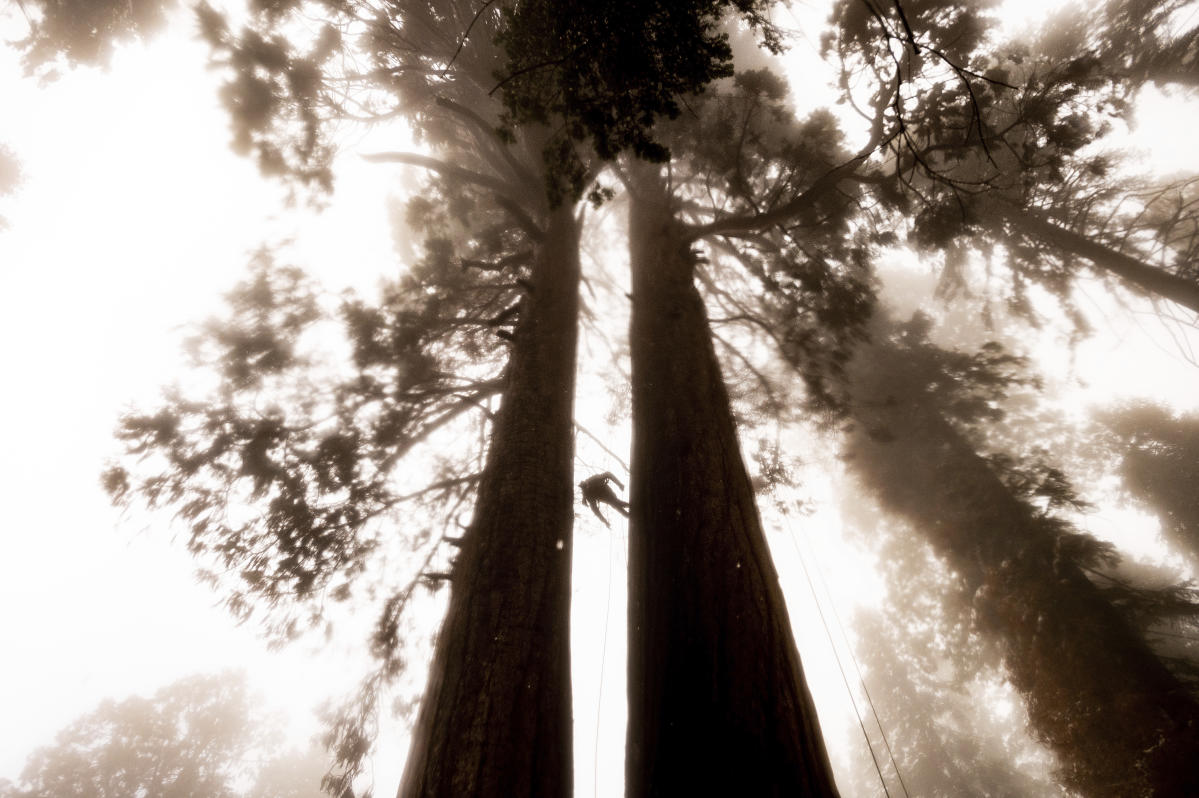BILLINGS, Mont. (AP) – The Biden administration is advancing its plan to limit logging in old-growth forests increasingly threatened by climate change, with exceptions such as clearing trees to make forests less susceptible to wildfires, according to an analysis by the U.S. government obtained by The Associated. Press.
The analysis — expected to be released Friday — shows that officials plan to reject a blanket ban on old-growth logging that some environmentalists have long sought. Officials concluded that such a sweeping ban would make it more difficult to thin forests to better protect communities from wildfires that have become more severe as the planet warms.
“To ensure the longevity of old-growth forests, we will need to undertake proactive management to protect against wildfires, insects and disease,” Chris French, deputy chief of the Forest Service, told AP in an interview. According to him, if these forests are not allowed to be thinned, there is a risk that even more trees will be lost.
The exceptions that would allow logging are unlikely to satisfy timber industry representatives and Republicans in Congress. They have resisted new restrictions. French claimed the impact on timber companies would be minimal.
“There are so few timber sales happening in old growth right now… that the overall impacts are very small,” French said.
The proposed changes mark a shift within an organization that historically promoted logging. They are expected to be completed sooner President Joe BidenThe country’s first term ends in January and comes after the Democrat issued a 2022 executive order directing the U.S. Department of Agriculture to identify old-growth forests across the country and devise ways to preserve them.
That order set off a wave of controversy over what fits under the definition of old growth and how those trees should be managed.
Old-growth forests, such as Northern California’s legendary giant sequoias, have layer upon layer of undisturbed trees and vegetation. There is broad consensus on the importance of their conservation – both symbolically as wonders of nature, and more practically because their trunks and branches store large amounts of carbon that can be released when forests burn, contributing to climate change.
The urgency of the problem is underscored by the wildfires that have killed thousands of giant sequoias in recent years. The towering giants are concentrated in about 70 groves scattered along the western side of the Sierra Nevada.
Most old-growth forests in the United States have been lost to logging as the country developed over the past few centuries. Yet centuries-old trees still remain, scattered across the US, including California, the Pacific Northwest and parts of the Rocky Mountains. Larger areas of old growth survive in Alaska, such as in the Tongass National Forest.
Old-growth timber harvesting in the Tongass was limited to only small commercial sales in 2021. According to the government’s proposal, these would no longer occur.
The new analysis follows a separate report on threats to primary forests completed last week. It concluded that wildfires, insects and disease have been the leading causes of death of old-growth trees since 2000, accounting for nearly 1,400 square miles (3,600 square kilometers) of losses.
In contrast, logging on federal lands has cleared about 14 square kilometers of old growth (36 square kilometers). That figure has been seized upon by timber industry representatives who argue that further restrictions are not necessary.
“Most forest plans already limit harvesting in old growth forest areas,” said Bill Imbergamo of the Federal Forest Resource Coalition, an industry group. “A binding restriction on timber harvests is not where their priority should be.”
Environmentalists have urged the administration to go even further in their efforts to halt logging projects on federal lands in Oregon, South Dakota, Montana, Idaho and other states.
Jamie Williams, chairman of The Wilderness Society, said the proposal was “a step in the right direction”.
“But it must go further to protect and restore resilient old-growth forests in a way that meets the challenges of a changing climate,” he added.
Under former President Donald Trump, federal officials sought to open millions of acres of West Coast forests to possible logging. Federal wildlife officials reversed the move in 2021 after determining that political appointees under Trump had relied on flawed science to justify drastically shrinking forest areas considered critical habitat for the imperiled northern spotted owl.







